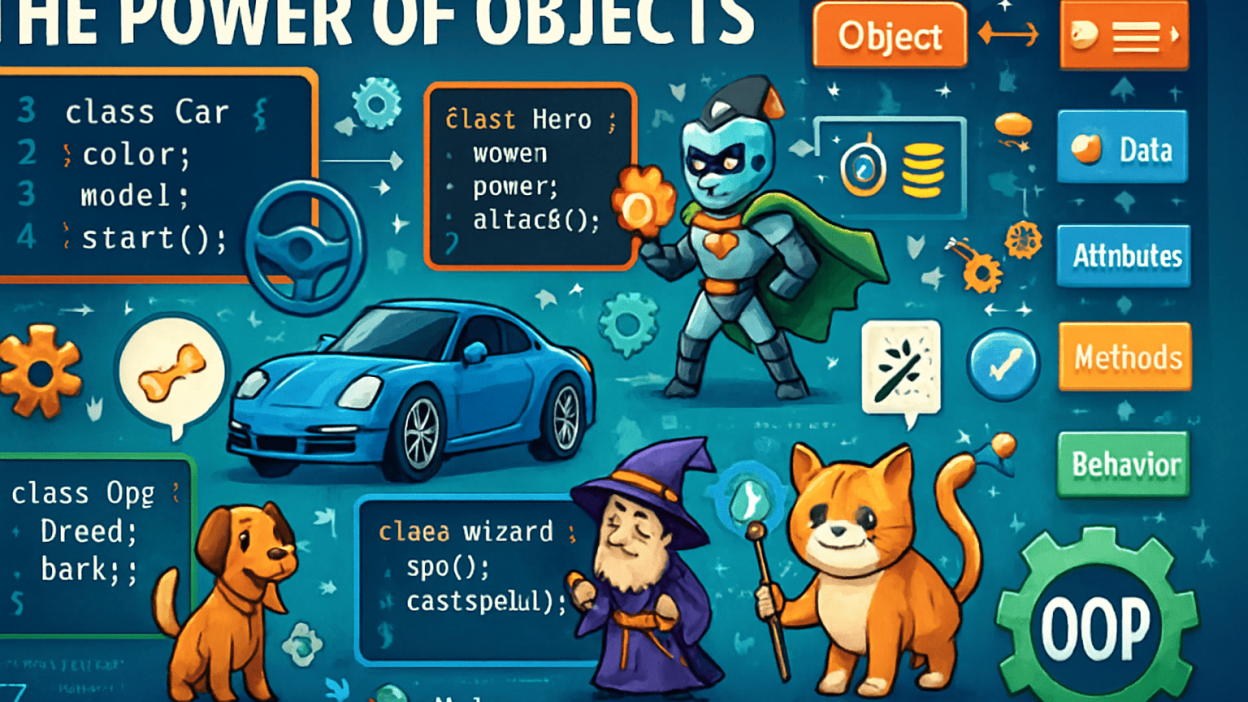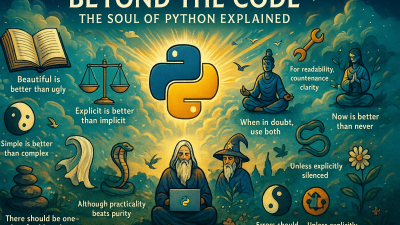In today’s world, the demand for powerful and complex software is higher than ever. To meet this demand, we need ways to build software that is not only robust and correct but also economical and adaptable. Object-Oriented Programming (OOP) provides a powerful set of principles for achieving this.
At its heart, OOP is about creating reusable software components called objects. An object is a software model of a “thing”—almost any noun can be represented as an object. Think of a date object, a user object, a file object, or a shopping cart object. Each object bundles together two key aspects:
- Attributes: What the object knows (its data or state). For example, a Car object might have attributes like color, speed, and fuelLevel.
- Behaviors: What the object does (its actions or functions). For example, that same Car object might have behaviors like accelerate(), brake(), and honk().
This modular approach allows development teams to be more productive than with older techniques. Programs built with objects are often easier to understand, correct, and modify.
The Car Analogy: From Blueprint to Object
Let’s use a simple analogy. Imagine you want to drive a car and press its accelerator pedal to go faster.
First, the car must be designed. Engineers create detailed blueprints that specify every part: the engine, the brakes, and, crucially, the accelerator pedal. The pedal is designed to hide its complex inner workings from the driver. You don’t need to know about combustion or fuel injection to use it; you just need to know what it does.
But you can’t drive a blueprint. The car must be built from those designs. A finished car has a real, functional accelerator pedal. However, the car won’t accelerate by itself—the driver must interact with it by pressing the pedal.
This mirrors the core concepts of OOP:
- The blueprint is the Class.
- The built car is an Object (or Instance) of that class.
- Pressing the pedal is calling a Method (a function that performs a task).
Key OOP Concepts Explained
- Class: A class is a blueprint or template that defines the attributes and behaviors that objects of that type will have. It’s the engineering drawing. A BankAccount class might define attributes like accountNumber and balance, and methods like deposit(), withdraw(), and getBalance().
- Object (Instance): An object is a concrete, usable instance built from a class. It’s the actual car rolling off the assembly line. If BankAccount is the class, then my_savings_account is an object created from that blueprint. The process of creating an object from a class is called instantiation.
- Method: A method is a function defined within a class that describes a behavior or task an object can perform. It’s the action of the accelerator pedal. Methods operate on the object’s internal data (attributes) and facilitate interaction.
- Attributes (Instance Variables): These are the data elements that define the object’s state. Each object has its own copy of these attributes. Every car has its own current_speed and fuel_level; every bank account object has its own unique balance.
- Encapsulation: This is the principle of bundling data (attributes) and methods that operate on that data into a single unit (the object), while restricting direct access to some of the object’s components. This is the “hiding” of the complex engine mechanics behind a simple pedal. It prevents the internal state from being corrupted by unexpected external interference.
- Reuse: A single class blueprint can be reused over and over to create many objects. This is a fundamental benefit. Well-designed classes can be shared across projects, saving immense time and effort. Just as interchangeable parts revolutionized manufacturing, reusable classes are the cornerstone of modern software development.
- Inheritance: This allows us to create new classes based on existing ones. The new class (called the subclass) inherits all the attributes and methods of an existing class (the superclass) and can add its own unique features. For example, a Convertible class could inherit everything from a general Automobile class and then add a unique lowerRoof() method.
Object-Oriented Analysis and Design (OOAD)
For small projects, you might start coding right away. But for large, complex systems—like banking software or air traffic control—this approach fails.
A disciplined process is required:
- Analysis: Determine what the system must do (its requirements).
- Design: Determine how the system will do it, often by identifying objects, their attributes, their behaviors, and how they interact.
When this process is done from an object-oriented perspective, it’s called Object-Oriented Analysis and Design (OOAD). OOP languages are the tools we use to implement these object-oriented designs into working systems. By thinking in terms of objects from the very beginning, we can create software that is more modular, maintainable, and scalable.



